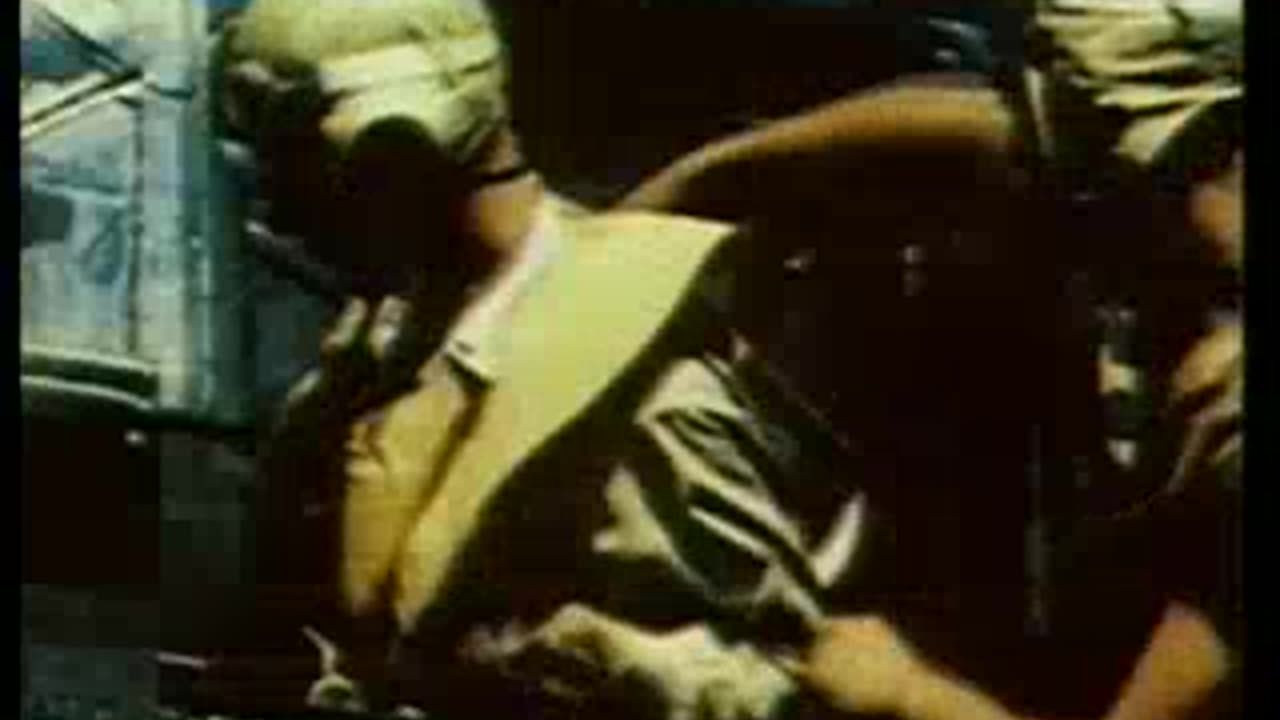Premium Only Content

The Fighting Lady by William Wyler
The Fighting Lady, released in 1944 and directed by the acclaimed William Wyler, is a gripping wartime documentary that offers an intimate and vivid portrait of life aboard a U.S. Navy aircraft carrier during World War II. Narrated in part by actor Robert Taylor, the film centers on the USS Yorktown (though its identity is masked under the pseudonym "The Fighting Lady" for security reasons), a vessel described as "enormous, wonderful, and strange to us." This Technicolor production captures the scale, complexity, and raw power of one of the Navy’s most vital warships, immersing viewers in the daily routines, challenges, and triumphs of the sailors and pilots who called it home.
The film begins by profiling the multifaceted activities of the crew, showcasing the intricate choreography of life on a carrier. From the maintenance of fighter planes by skilled mechanics to the coordination of flight operations on the bustling deck, Wyler highlights the teamwork and discipline required to keep this floating city operational. The documentary takes viewers on a journey alongside the ship as it passes through the Panama Canal, a strategic marvel that underscores the global scope of the war effort. This segment provides a brief respite, offering scenic beauty and a sense of anticipation before the narrative shifts to the harrowing realities of combat.
As the story progresses, The Fighting Lady plunges into a series of real combat engagements, bringing the audience face-to-face with the visceral intensity of naval warfare. The carrier participates in a daring strike on the Marcus Islands, a Japanese-held territory in the Pacific, where American planes launch into the fray to disrupt enemy operations. The film doesn’t shy away from the chaos of battle, depicting the ship defending itself against a surprise nighttime raid by Japanese fighters. These sequences are heightened by Wyler’s use of authentic footage, some of which was captured by cameras mounted in the cockpits of American planes. This innovative approach provides a first-hand perspective of pilots diving through a hail of enemy anti-aircraft fire, their planes shuddering under the strain as they press their attacks. The shaky, unpolished visuals lend an immediacy that underscores the bravery and peril of aerial combat.
The climax of the film is a monumental confrontation with the Imperial Japanese Battle Fleet during the Battle of the Philippine Sea, an operation later dubbed the "Marianas Turkey Shoot." This massive engagement, fought in June 1944, is portrayed as a turning point in the Pacific Theater. The documentary captures the overwhelming might of the American forces as their pilots down nearly four hundred Japanese Zeros and other aircraft, while suffering only twenty-two losses—an astonishing testament to their skill and the carrier’s strategic importance. Wyler’s direction balances the raw excitement of victory with a sobering acknowledgment of the human cost, including moments of reflection on the sailors and airmen who didn’t return.
Shot in vivid Technicolor—a rarity for wartime documentaries—The Fighting Lady blends propaganda with artistry, serving as both a morale booster for wartime audiences and a historical record of naval aviation’s pivotal role in World War II. Wyler, known for masterpieces like Mrs. Miniver and The Best Years of Our Lives, brings a filmmaker’s eye to the project, elevating it beyond mere military footage into a compelling narrative of courage, sacrifice, and resilience. The film earned an Academy Award for Best Documentary Feature in 1945, a testament to its impact and quality.
For history buffs and cinema enthusiasts alike, The Fighting Lady remains a powerful window into the lived experience of WWII naval warfare, preserving the sights and sounds of a conflict that shaped the 20th century. Its blend of real-time combat, personal stories, and breathtaking aerial photography makes it a standout in the canon of wartime documentaries. If you enjoyed this deep dive into The Fighting Lady, please give it a like and subscribe to the channel for more explorations of classic films and historical treasures!
-
 18:01
18:01
Tactical Advisor
1 hour agoNew Miniature AR15 / New Guns | Vault Room Live Stream 037
8.25K2 -

GamerGril
3 hours agoGG BINGO | 💕 The Beast Inside 💕 | Not Even Scared
15.6K3 -
 2:02:10
2:02:10
Akademiks
4 hours agoWar in RAT-LANTA. Young Thug vs Gunna vs Ralo vs YSL MONDO. Who Will Le Bebe Pick. FINAL CRASHOUT!
35.4K7 -
 1:13:36
1:13:36
Jeff Ahern
4 hours ago $2.24 earnedThe Sunday Show with Jeff Ahern
19.7K6 -
 LIVE
LIVE
GoodLifeGaming
5 hours ago🔴LIVE - TARKOV PVP SOLO LEARNING - 2 MIL STASH - LEVEL 14 - WOODS LOOT RUNS - POSSIBLE QUESTING
49 watching -
 29:16
29:16
The Shannon Joy Show
1 day ago🔥🔥The Extraordinary Healing POWER Of The Sun - With Dr. Chad Walding🔥🔥
29.2K5 -
 LIVE
LIVE
KammieKamz
2 hours agoKamz & Lydia take on REBIRTH ISLAND RANK to diamond *Agent of Chaos 😏💨 | Warzone Queen on Rumble”
30 watching -
 LIVE
LIVE
FusedAegisTV
7 hours agoHollow Knight Silksong Waiting Room ~~ pt. 2
68 watching -
 15:27
15:27
Sideserf Cake Studio
1 day ago $14.71 earnedThis K-Pop Demon Hunters CAKE is how it's done, done, done!
68.3K15 -
 54:47
54:47
Side Scrollers Podcast
1 day agoSide Scroller Presents KING OF THE KART | MASSIVE MARIO KART TOURNAMENT
101K2